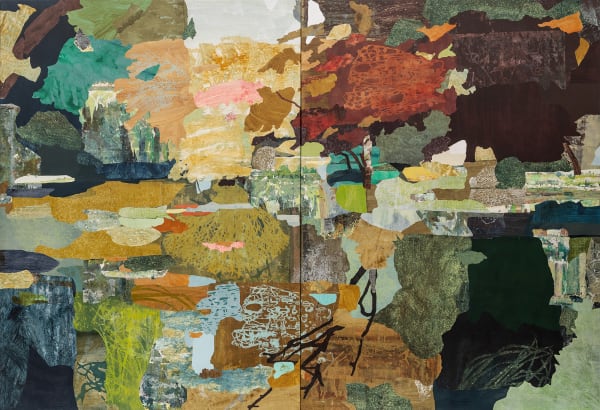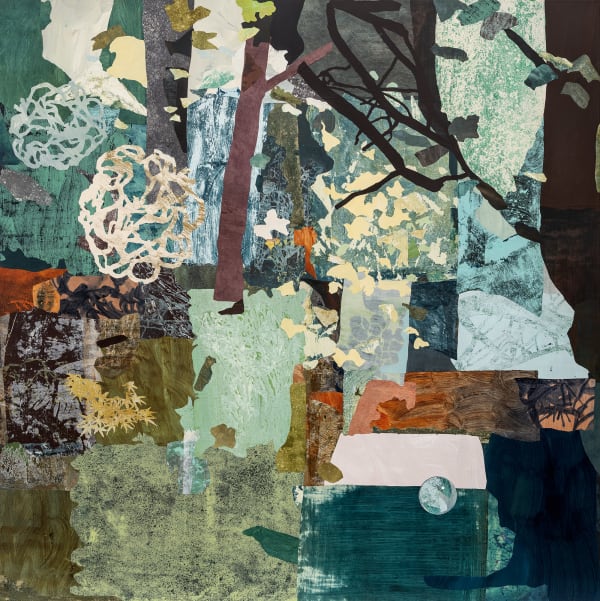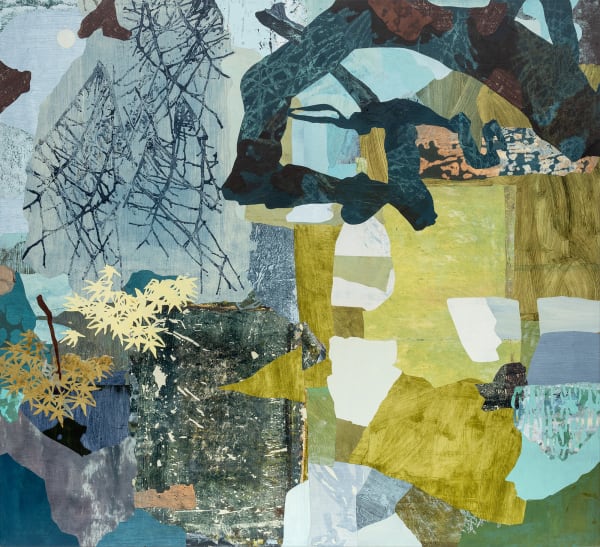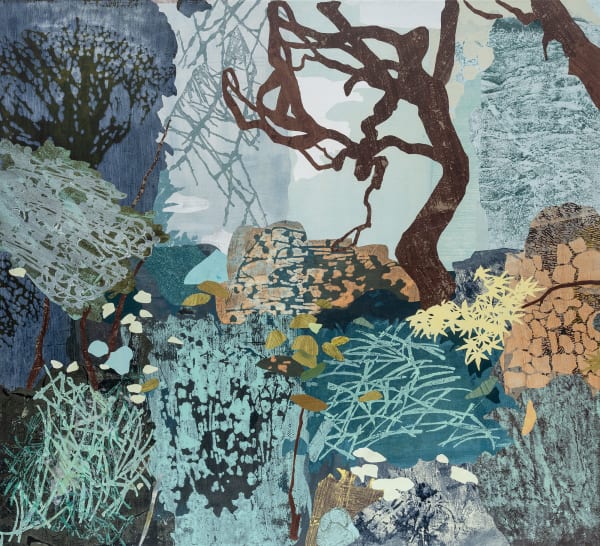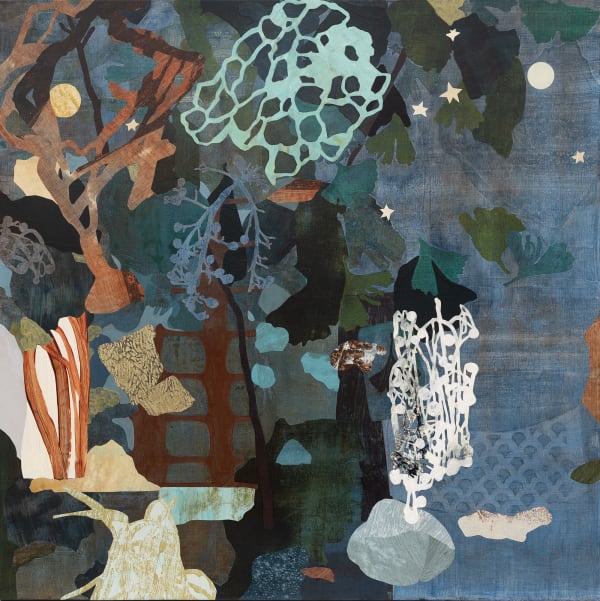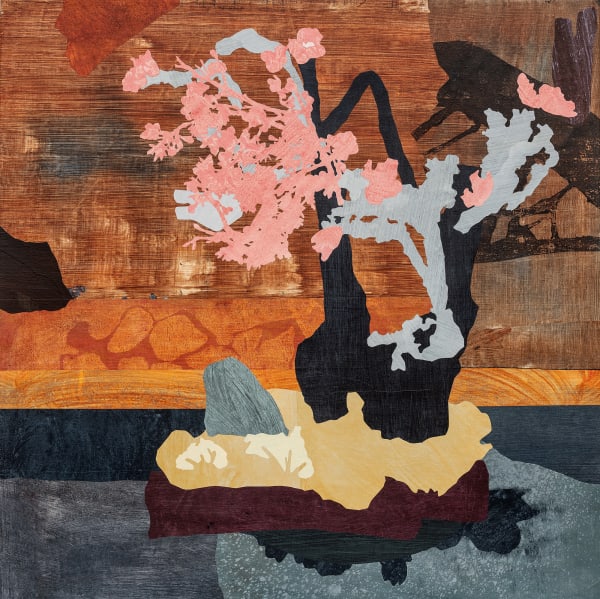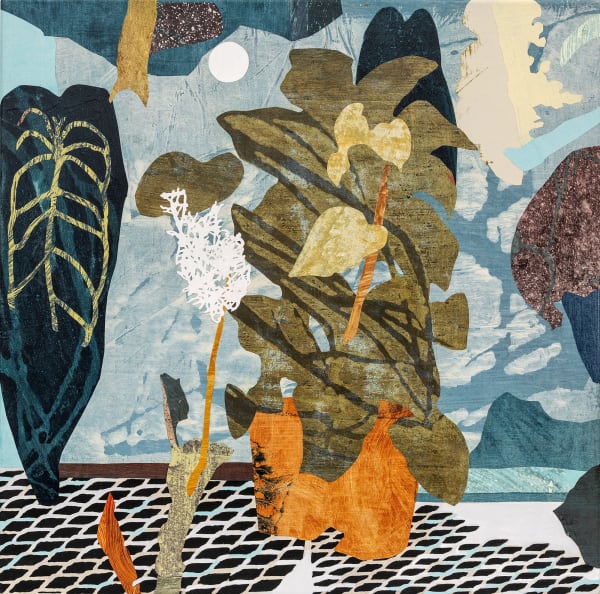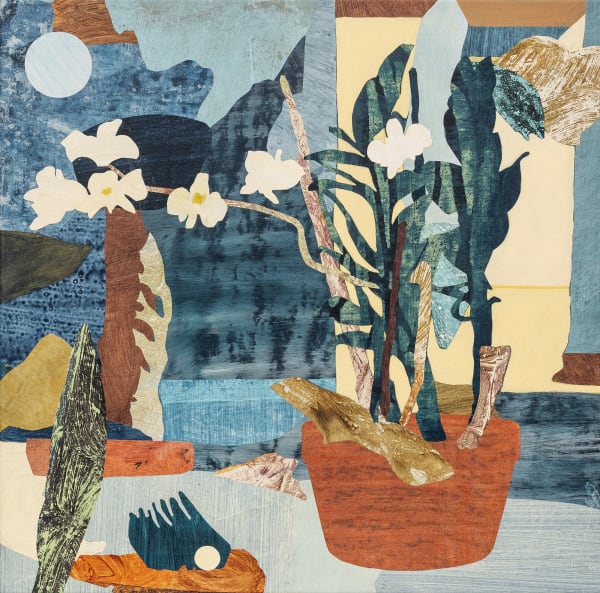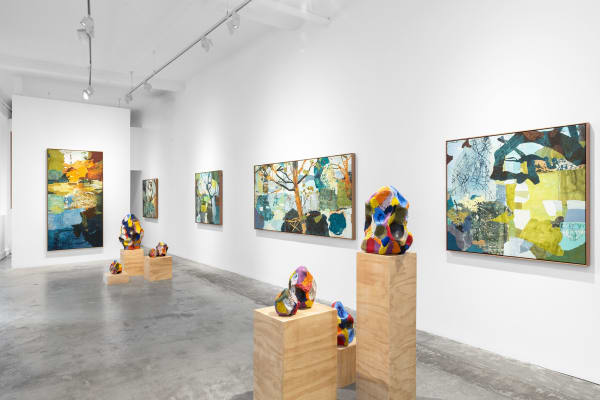Nicola Moss: Green Makes Me Happy
-
 Nicola MossTrees I Have Met, 2022acrylic, graphite and paper on linen198 x 344 cm (free-standing screen – 4 panels)Sold
Nicola MossTrees I Have Met, 2022acrylic, graphite and paper on linen198 x 344 cm (free-standing screen – 4 panels)Sold -
 Nicola MossIn My Memories of Green Pool, 2022acrylic, graphite and paper on linen155 x 339 cm (framed triptych)Sold
Nicola MossIn My Memories of Green Pool, 2022acrylic, graphite and paper on linen155 x 339 cm (framed triptych)Sold -
 Nicola MossArcadia (Gelato Dreams), 2021acrylic and paper on linen155 x 227 cm (framed diptych)Sold
Nicola MossArcadia (Gelato Dreams), 2021acrylic and paper on linen155 x 227 cm (framed diptych)Sold -
 Nicola MossUrban Jungle, 2021acrylic and paper on linen171 x 171 cm (framed)Sold
Nicola MossUrban Jungle, 2021acrylic and paper on linen171 x 171 cm (framed)Sold -
 Nicola MossGreen Makes Me Happy II, 2021acrylic and paper on linen171 x 171 cm (framed)Sold
Nicola MossGreen Makes Me Happy II, 2021acrylic and paper on linen171 x 171 cm (framed)Sold -
 Nicola MossModern Nature (You Can Still Make My Heart Sing), 2022acrylic and paper on linen171 x 171 cm (framed)Sold
Nicola MossModern Nature (You Can Still Make My Heart Sing), 2022acrylic and paper on linen171 x 171 cm (framed)Sold -
 Nicola MossIn Your Arms, 2021acrylic and paper on linen115 x 247 cm (framed diptych)Sold
Nicola MossIn Your Arms, 2021acrylic and paper on linen115 x 247 cm (framed diptych)Sold -
 Nicola MossArcadia Meets Utopia, 2021acrylic and paper on linen232 x 115 cm (framed)Sold
Nicola MossArcadia Meets Utopia, 2021acrylic and paper on linen232 x 115 cm (framed)Sold -
 Nicola MossGreen Pool – Dreams of Russet, 2022acrylic and paper on linen115 x 155 cm (framed)Sold
Nicola MossGreen Pool – Dreams of Russet, 2022acrylic and paper on linen115 x 155 cm (framed)Sold -
 Nicola MossOur Stars Aligned, 2021acrylic and paper on linen115 x 125 cm (framed)Sold
Nicola MossOur Stars Aligned, 2021acrylic and paper on linen115 x 125 cm (framed)Sold -
 Nicola MossSpend Days in Humble Green I, 2021acrylic and paper on linen115 x 125 cm (framed)Sold
Nicola MossSpend Days in Humble Green I, 2021acrylic and paper on linen115 x 125 cm (framed)Sold -
 Nicola MossSpend Days in Humble Green II, 2021acrylic and paper on linen115 x 125 cm (framed)Sold
Nicola MossSpend Days in Humble Green II, 2021acrylic and paper on linen115 x 125 cm (framed)Sold -
 Nicola MossThe Collection Room, 2022acrylic and paper on linen115 x 125 cm (framed)Sold
Nicola MossThe Collection Room, 2022acrylic and paper on linen115 x 125 cm (framed)Sold -
 Nicola MossThe World in a Garden, 2021acrylic and paper on linen115 x 125 cm (framed)Sold
Nicola MossThe World in a Garden, 2021acrylic and paper on linen115 x 125 cm (framed)Sold -
 Nicola MossStardust and Ginkgo, 2022acrylic and paper on linen95 x 95 cm (framed)Sold
Nicola MossStardust and Ginkgo, 2022acrylic and paper on linen95 x 95 cm (framed)Sold -
 Nicola MossNever Too Many, 2022acrylic and paper on linen79 x 79 cm (framed)Sold
Nicola MossNever Too Many, 2022acrylic and paper on linen79 x 79 cm (framed)Sold -
 Nicola MossJoy With Cherry Blossom, 2022acrylic and paper on linen63 x 63 cm (framed)Sold
Nicola MossJoy With Cherry Blossom, 2022acrylic and paper on linen63 x 63 cm (framed)Sold -
 Nicola MossJoy With Chartreuse, 2022acrylic and paper on linen60 x 60 cm, 63 x 63 cm (framed)Sold
Nicola MossJoy With Chartreuse, 2022acrylic and paper on linen60 x 60 cm, 63 x 63 cm (framed)Sold -
 Nicola MossLocal Air – Silvereye, 2021acrylic and paper on linen59 x 59 cm (framed)Sold
Nicola MossLocal Air – Silvereye, 2021acrylic and paper on linen59 x 59 cm (framed)Sold -
 Nicola MossHot House Companions, 2022acrylic and paper on linen59 x 59 cm (framed)Sold
Nicola MossHot House Companions, 2022acrylic and paper on linen59 x 59 cm (framed)Sold -
 Nicola MossPlant Dreams – Sunshine, 2022acrylic and paper on linen59 x 59 cm (framed)Sold
Nicola MossPlant Dreams – Sunshine, 2022acrylic and paper on linen59 x 59 cm (framed)Sold -
 Nicola MossCuttings From Friends, 2022acrylic and paper on linen59 x 59 cm (framed)Sold
Nicola MossCuttings From Friends, 2022acrylic and paper on linen59 x 59 cm (framed)Sold -
 Nicola MossJoy With Pink, 2022acrylic and paper on linen on board28 x 40 cm, 31 x 43 cm (framed)Sold
Nicola MossJoy With Pink, 2022acrylic and paper on linen on board28 x 40 cm, 31 x 43 cm (framed)Sold -
 Nicola MossJoy With Burnt Orange, 2021acrylic and paper on linen on board28 x 40 cm, 31 x 43 cm (framed)
Nicola MossJoy With Burnt Orange, 2021acrylic and paper on linen on board28 x 40 cm, 31 x 43 cm (framed)
At the centre of Nicola Moss’ art is a heartfelt consideration of environmental sustainability and ‘sustainism’, as the artist optimistically envisions a world reshaped by harmony, connectedness and symbiosis. In her effervescent paintings and paper collages, nature is implied but not defined – through the trope of the garden. Just as a garden is a constructed place, Moss’ works boldly declare their own construction with crisp silhouetted edges and abstract patterning embracing the whimsy and wonder of the natural world in its endless iterations.
Aptly titled ‘Green makes me happy’ – inspired by a viewer’s written response to her last exhibition – Moss’ new series continues her joyful engrossment in gardens and greenspaces. Referencing four specific gardens, Moss looks closely at how such places nurture connection: to oneself, to others and to the world. “For me, sensory engagement in a natural space is at the heart of our connection to all forms of life”, she reflects.
Moss’ artworks are informed by site visits, international residencies, travel, and ongoing engagement with communities in the discussion of local and global greenspace issues. The gardens referenced in her newest works range from a suburban walled garden in Tokyo, to Italian botanical gardens, as well as the artist’s own garden on the Gold Coast. Each celebrates the richness and complexity of plants, positing the communal garden as a shared respite, and the private garden as a meditative cocoon. There is an otherworldly luminosity emanating from within these works; a reflective glow like surfaces during a sun shower – when light waltzes with water in a shimmering show. We can feel the artist’s longing to dissolve into the places lovingly reconstructed with paper and paint.
Though people are absent from Moss’ gardens, these works are laced with warm memories of human connection. In Urban Jungle, a sunset-hued floating bridge and cool stream recall time spent with Hiroko and Tatsuhiko Murata in Tokyo, whose walled home garden Moss explored. The various shades of green characteristic of traditional Japanese gardens hatches a sense of serenity, while a central trunk splices the composition into two sections — that of the bridge and the background. Here we’re treated to two perspectives, just as Japanese gardens are designed to be viewed from multiple points. There is the sense that these personal places house not just Moss’ own experience, but some sort of unspoken universal knowing – the cross-cultural, cross-temporal power of the humble garden, an ancient power that stretches back thousands of years.
Moss’ process begins off the canvas as she paints, stains, prints and frottages the surfaces of Japanese paper before cutting and tearing into shapes. Painted papers are often layered with mono-prints formed from paper-cut stencils, or stainings and frottage rubbings distilled directly from nature, creating an archive of coloured surfaces that mimics motifs of nature; the textures of leaves, the gradients of bark, the markings of insects. The artist then works intuitively, guided by palette rather than plan, assembling her materials before slowly and intricately building each linen canvas. In some of the works, leaves sit on trees in the foreground as if they have fallen gently from Moss’ hand, settling wherever they choose. There is the sense that although these works are highly constructed — much like the gardens themselves — they are always subject to the whims of nature, and of chance.
There are pale, grainy moments of abstraction in Moss’ paintings, as if memory is slipping away, yet other areas of great clarity and precision — dark, solid forms that withstand the lashings of time like stone relics. Trees stand sharp against vivacious patchworks of pattern, their anthropomorphic limbs orchestrating silent melodies. The large multi-panel work Trees I have met represents tree trunks of a protected area of dryland rainforest species Moss shares with her neighbour’s garden. Here, a crowd of trees with colourful personalities seem to move across the canvas like commuters in a city, passing each other by with calm steps. This work – and many across Moss’ oeuvre – celebrates natural diversity in a world where real heterogeneity is slowly disappearing.
As with many before her – from ancient philosophers to Modern poets – Moss reveres gardens as sustaining environments that nourish body and mind; capsules of emotion with humble force. She asks us, simply, “what value do we place on plants in our everyday life?”
Elli Walsh
Principle Writer, Artist Profile


